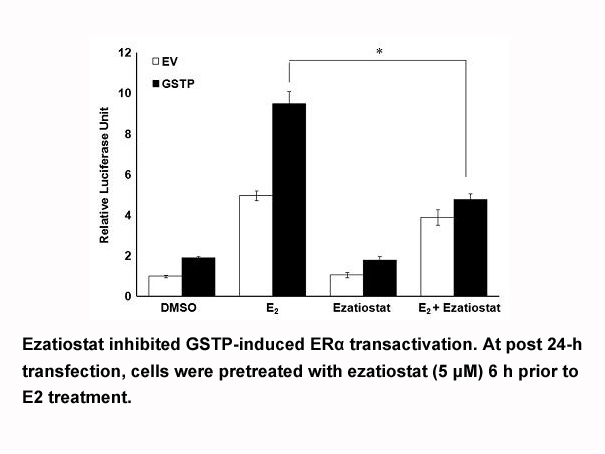Archives
br Conclusions We concluded that the inhibitory effects
Conclusions
We concluded that the inhibitory effects of propofol on fMMYALF-induced neutrophil activation are mediated by competition with FPR1, which inhibits receptor-mediated downstream signaling and inflammatory responses such as oxidative burst, elastase release, and chemotactic migration (Fig. 10). Our experiments performed using a septic mouse model revealed that propofol, an FPR1 antagonist, may be beneficial for treating patients who are critically ill with sepsis and sepsis-associated ALI.
Introduction
Resolution of inflammation, an active process that prevents tissue damage and re-establish homeostasis, is governed by specific mediators [1]. The arachidonic Rapamycin (AA)-derived lipoxins (LX), were the first chemical autacoids recognized to have dual anti-inflammatory and pro-resolution activities [2], [3], [4]. LXA4 (5,6,15S-trihydroxy-7,9,11,13-trans-11-cis-eicosatetraenoic acid) is biosynthesized primarily during cell–cell interactions that occur in vivo by trans-cellular routes involving 5-Lipoxygenase (LO) and 15-LO or 5- and 12-LO [4]. In addition, 15-epi-LXA (5,6,15R-trihydroxy-7,9,11,13-trans-11-cis-eicosatetraenoic acid), formed in the presence of aspirin via acetylation of endothelial cyclooxygenase-2 (COX-2) [5], proved to mediate anti-inflammatory actions of low-dose aspirin in humans [6]. LXA4 and 15-epi-LXA4 inhibit polymorphonuclear leukocyte (PMN) infiltration in inflamed tissues, promote inflammation resolution in vivo by stimulating phagocytosis of apoptotic cells and microbes, and have protective actions in the cardiovascular district by stimulating the production of prostacyclin and nitric oxide, upregulating heme oxygenase-1, and reducing oxidative stress in endothelial cells [4].
LXA4 and 15-epi-LXA4 bind and activate a specific G protein-coupled receptor (GPCR), initially identified in human leukocytes and termed formyl peptide receptor like-1 (FPRL-1) or FPR2 [7], recently re-named ALX/FPR2, because of its high affinity for LXA4[8]. This receptor is also recognized by resolvin (Rv)D1 [9], [10] and by the glucocorticoid-induced protein annexin-1 and its N-terminal peptides [11], two additional main components of the resolution cascade. Thus, ALX/FPR2 represents the first identified GPCR able to mediate anti-inflammatory and pro-resolving actions of both lipid and peptide endogenous mediators.
Human ALX/FPR2 is expressed in several cell types, including leukocytes, endothelial and epithelial cells [4]. Although a number of pro-inflammatory peptides can activate this receptor in vitro [11], its main function in vivo appears to be anti-inflammatory and pro-resolutive, as documented by studies of targeted overexpression and genetic deletion of both human and murine orthologs of this GPCR [12], [13]. Along these lines, Morris et al. reported that 15-epi-LXA4 biosynthesis and ALX/FPR2 expression determine the magnitude and duration of inflammatory reaction in humans [14], while other studies demonstrated decreased biosynthesis of LXA4 and expression of ALX/FPR2 in patients with chronic disease, like asthma [12], [13] in which LXA4 is pro-resolutive and organ protective [15]. These results unveil the importance of the LX-ALX/FPR2 axis in orchestrating anti-inflammatory and pro-resolution pathways in humans, underscoring the need for knowledge of regulatory mechanisms of ALX/FPR2 expression as proper background for the development of innovative anti-inflammatory pharmacology. Along these lines, we recently identified a ALX/FPR2 gene promoter region and a heritable genetic variant associated with reduced receptor expression [16]. More recently, we demonstrated that ALX/FPR2 expression and pro-resolution actions is regulated by microRNA 181b [17].
types, including leukocytes, endothelial and epithelial cells [4]. Although a number of pro-inflammatory peptides can activate this receptor in vitro [11], its main function in vivo appears to be anti-inflammatory and pro-resolutive, as documented by studies of targeted overexpression and genetic deletion of both human and murine orthologs of this GPCR [12], [13]. Along these lines, Morris et al. reported that 15-epi-LXA4 biosynthesis and ALX/FPR2 expression determine the magnitude and duration of inflammatory reaction in humans [14], while other studies demonstrated decreased biosynthesis of LXA4 and expression of ALX/FPR2 in patients with chronic disease, like asthma [12], [13] in which LXA4 is pro-resolutive and organ protective [15]. These results unveil the importance of the LX-ALX/FPR2 axis in orchestrating anti-inflammatory and pro-resolution pathways in humans, underscoring the need for knowledge of regulatory mechanisms of ALX/FPR2 expression as proper background for the development of innovative anti-inflammatory pharmacology. Along these lines, we recently identified a ALX/FPR2 gene promoter region and a heritable genetic variant associated with reduced receptor expression [16]. More recently, we demonstrated that ALX/FPR2 expression and pro-resolution actions is regulated by microRNA 181b [17].
Materials and methods
Results
Discussion
Regulatory mechanisms of ALX/FPR2 expression may have clinical relevance, as the pro-resolution function of this receptor has been documented in vitro and in animal models [20]. In previous work, we mapped and characterized the ALX/FPR2 promoter and uncovered a human heritable mutation, within the core promoter, that drastically reduces promoter activity as well as mRNA and protein expression [16]. We also identified miR-181b as a main controller of ALX/FPR2 expression [17].